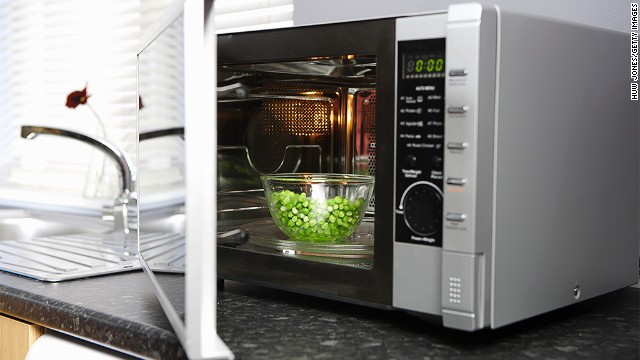
We’ve all heard about how microwaving food removes some nutritional value, but is it true? Is something bad happening to our food behind that microwave glass?
If you do it right, cooking food in the microwave is one of the best ways to retain your food’s vitamins and minerals
There are dangers to microwaving your food. You could get scalded, for one. If you use the wrong kind of plastic (hint: one that doesn’t say “microwave safe”), unhealthy chemicals could seep into your food.
But if you’re concerned about getting the most nutrition out of your eats, microwaving is a safe bet. In fact, it’s near the top of the list for nutritionally sound food-preparation methods. If you use your microwave with a small amount of water to essentially steam food from the inside, you’ll retain more vitamins and minerals than with almost any other cooking method.
“Whenever you cook food, you’ll have some loss of nutrients,” says registered dietician and certified food scientist Catherine Adams Hutt. “The best cooking method for retaining nutrients is one that cooks quickly, exposes food to heat for the smallest amount of time and uses only a minimal amount of liquid.”
Consider spinach. Boil it on the stove, and it can lose up to 70% of its folic acid. Microwave it with just a little water, and you’ll retain nearly all its folic acid. Cooking bacon on a griddle until it’s crispy (yum) can create nitrosamines, while microwaving bacon creates far fewer of these cancer-promoting chemicals.
Of course, you can mess microwaving up. Dump your veggies in a bunch of water and overcook them, and you’ll leach out plenty of nutrition. “When you cook food in a microwave, cover it tightly, creating an efficient steam environment,” advises Hutt.
Steaming over a stovetop is just as good, though. In some cases, it may even be better: One small study found that steamed broccoli retained more of its cancer-fighting sulforaphane than microwaved broccoli.
But in most cases, using your microwave to cook food, if it’s covered tightly in a microwave-safe container with a minimal amount of liquid, is a nutritional win.
In fact, it can even enhance the nutrition of some foods. It makes the carotenoids in tomatoes and carrots more available to our bodies, for example. It makes the biotin in eggs digestible. And heat kills bacteria in food that can make us sick.
“From a safety standpoint,” says Hutt, “you don’t want to be eating raw chicken.”
So go ahead and use that microwave. It’s a quick way to essentially steam food from the inside out. You won’t get the aromas that baking or roasting provides, but if you do it right, with just a little bit of water in a tightly-closed microwave-safe container, you’ll be very well nourished.
Source: CNN health

